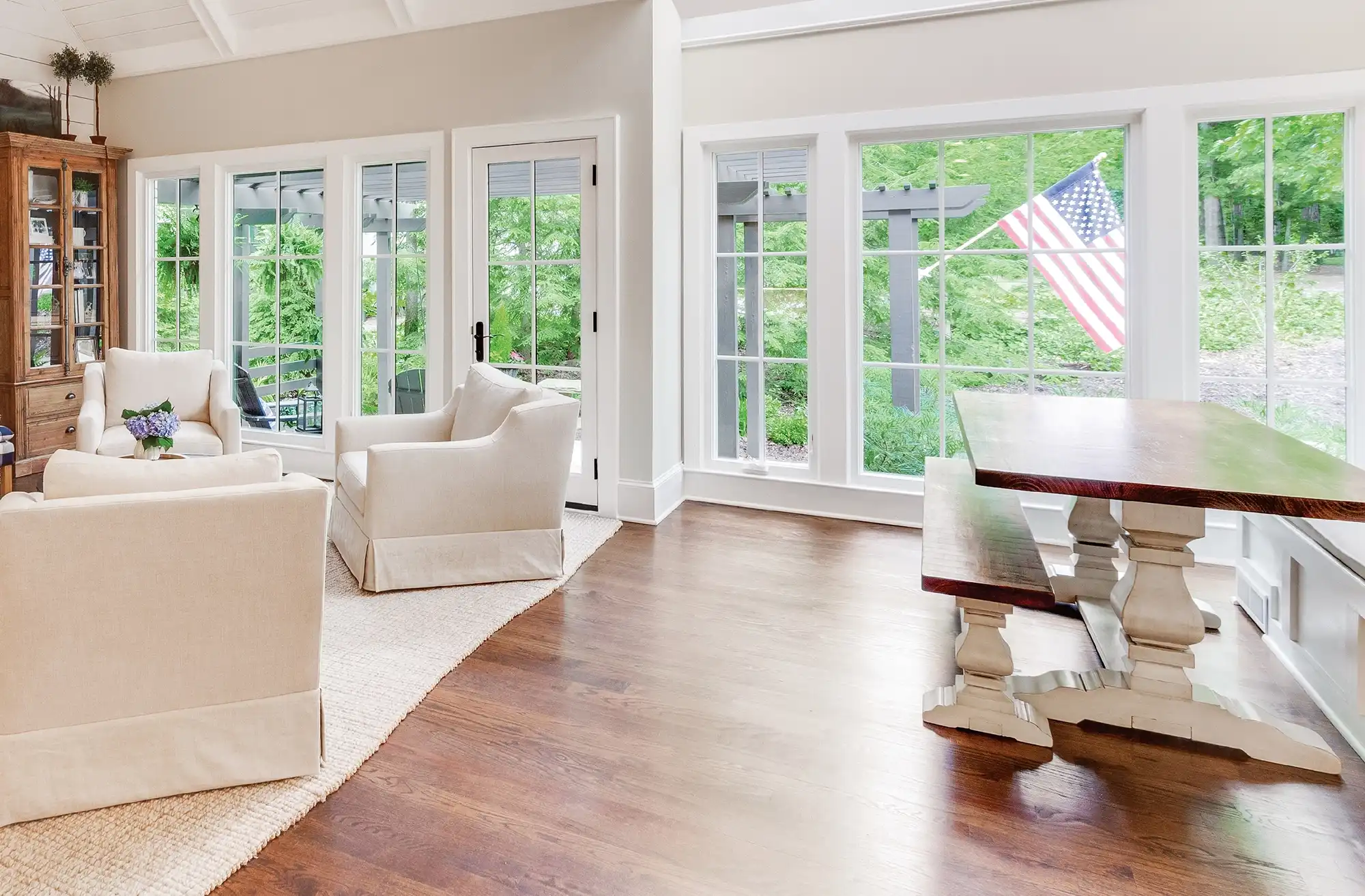
11 October 2023
Vinyl vs. Fiberglass Windows
You can face a tough decision when it comes to choosing replacement window materials. Fiberglass and vinyl remain two of the more popular options, but they feature some key differences that set Marvin Replacement fiberglass windows apart. Here’s what to know about fiberglass vs. vinyl windows.
Fiberglass Windows Overview
Fiberglass window material is made through a process called pultrusion. Pultruded fiberglass is a thermoset material made through a chemical process. A thermoset fiberglass composite won’t soften or melt in environmental temperatures, making it more resistant to pressure and temperature than vinyl composites.
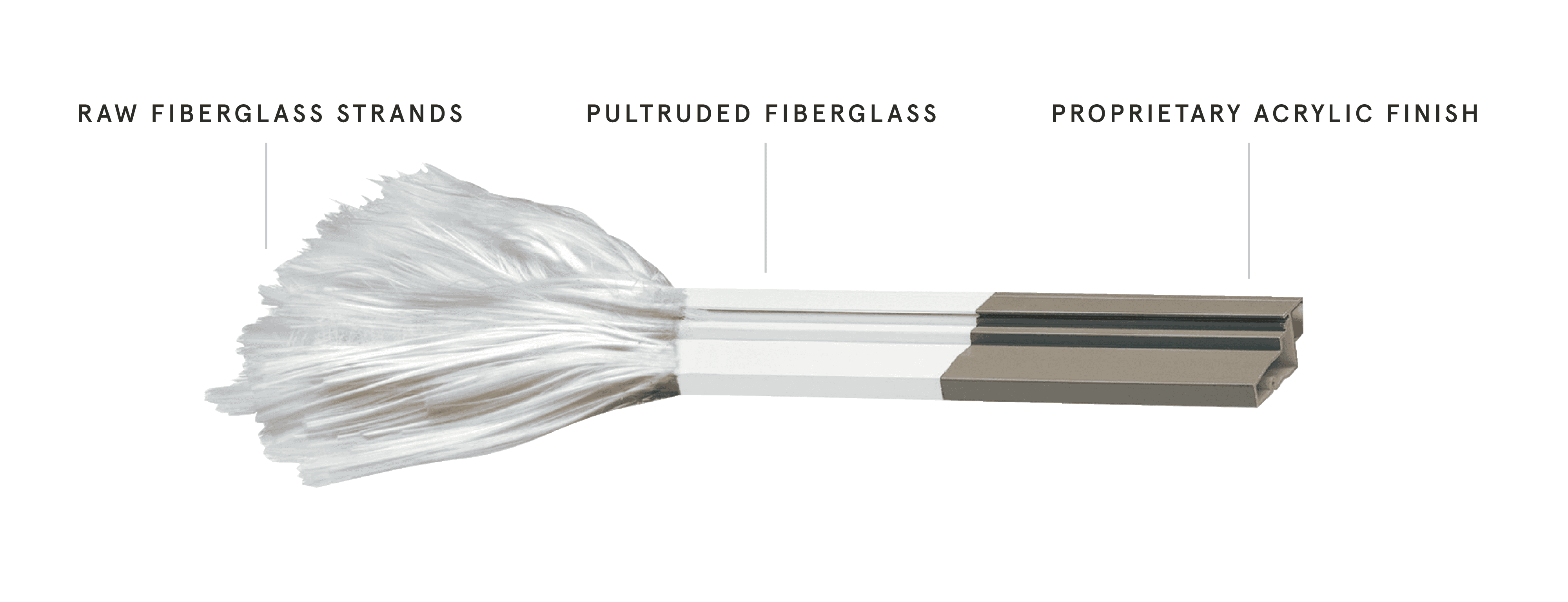
Fiberglass Windows at a Glance
At Marvin Replacement, we go one step further with our proprietary Ultrex® fiberglass windows. Ultrex fiberglass is made by taking thin strands of glass cables and saturating them in specifically compounded resins. The material is pulled through a series of shaping dies that form the sash or frame profiles, passes through a heated die, and then our proprietary acrylic finish is applied. The material is cut with diamond-edge blades due to its strength.
Fiberglass Windows Pros
Fiberglass windows have several advantages over other window materials. Our Ultrex fiberglass improves upon fiberglass windows with increased strength and low expansion rate.
Ultrex fiberglass windows pros
Low expansion rate—meaning your windows won’t warp, so they’ll open and close smoothly
Exceptional strength—Ultrex offers superior bending and flexing resistance to protect the integrity of your home. Other window materials can start to sag and create issues with your home
Fade resistant—Our Ultrex finish withstands up to 48,000 hours of sunlight without fading*
*Average sunlight exposure per 10 years.
Vinyl Windows Overview
Vinyl is a type of plastic made from ethylene and chlorine that when combined make polyvinyl chloride (PVC) resin. It has become the second-most manufactured and sold plastic resin in the world. You can find vinyl in things like old records and vinyl fabric.
Vinyl Window Pros + Cons
Vinyl windows remain a popular option for homeowners because of their lower cost, low-maintenance, and easy installation. Vinyl windows have some disadvantages, though.
Vinyl Window Pros
Low-maintenance—Vinyl windows rarely need painting or sanding, and are easy to clean
Available at big box retailers—Vinyl windows are easy to find off-the-shelf at home improvement stores
Lower costs—Vinyl’s low cost makes it attractive to homeowners, but low prices can also mean low quality
Vinyl Window Cons
Shorter lifespan—Vinyl windows have a shorter useful life expectancy compared to fiberglass windows1
Expansion—Can expand in hot weather and contract in cold weather, which can impact energy efficiency and air leakage
Less durability—Vinyl can chip or dent when impacted, making a window unsightly and lead to replacement
Are Fiberglass Windows Better than Vinyl? Vinyl and Fiberglass Window Differences
When you’re deciding on a window material for your home it’s important to know the differences between fiberglass vs vinyl windows. Fiberglass and vinyl windows share some characteristics, but they can differ in areas like lifespan, energy efficiency, and appearance.
Vinyl vs. Fiberglass Durability + Lifespan
Marvin Replacement’s Ultrex fiberglass offers the strongest window material in the replacement industry so you can count on its durability. Vinyl has a shorter lifespan and doesn’t offer the same protection as fiberglass when it comes to handling extreme temperatures. Vinyl can start to soften at 163° F while Ultrex fiberglass can withstand temperatures up to 285° F without losing its shape.
Fiberglass vs. Vinyl Window Appearance
Fiberglass windows and vinyl windows can look similar. The properties of Ultrex, however, can make it more resistant to fading and other imperfections. If you ever wanted to change the color of your windows, you can paint fiberglass windows. Painting vinyl windows has more difficulty because you need specific paint that will adhere to vinyl since it expands and contracts.
Ultrex fiberglass windows looks
Ultrex’s superior strength also means less material is needed for the frame, so you enjoy more glass area to let natural light into your home
Ultrex’s acrylic finish is three times thicker than competitors, which makes it more resistant to pinholes, scratches, and other imperfections
Our optional EverWood® wood grain interior finish matches the natural look and texture of wood but without the maintenance
Vinyl windows appearance
Vinyl can offer a range of colors to fit a home
Vinyl lacks the character that EverWood and wood provide
Vinyl windows have become so ubiquitous that some homeowners seek different window materials to set their homes apart
Why is Ultrex Fiberglass Stronger than Vinyl?
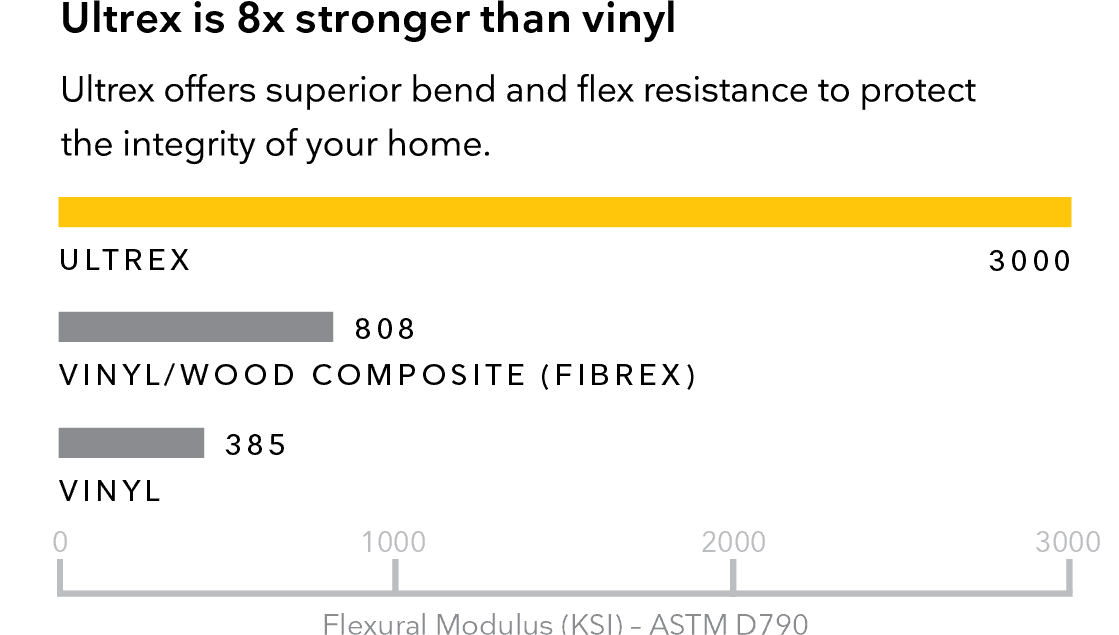
Fiberglass vs. Vinyl Window Maintenance
Both fiberglass and vinyl windows require little to no maintenance. See our tips on how to clean fiberglass windows.
Fiberglass vs. Vinyl Value
Vinyl windows may have a lower price point, but they have a shorter lifespan, and can suffer from expansion and contraction. A shorter lifespan and the contraction and expansion issues could lead to spending more on windows over the life of your home.
Replacing windows has a 61-68% recovery rate on your investment when you sell your home.
Ready for a Bigger, Brighter View?
Ready to invite Marvin Replacement Ultrex fiberglass windows into your home? Choose from a variety of replacement window options to make your home welcoming.
1 “Life cycle assessment of windows for the North American residential market: Case study” by the University of British Columbia. Scandinavian Journal of Forest Research, 2008.
Back to All Articles
You May Also Like
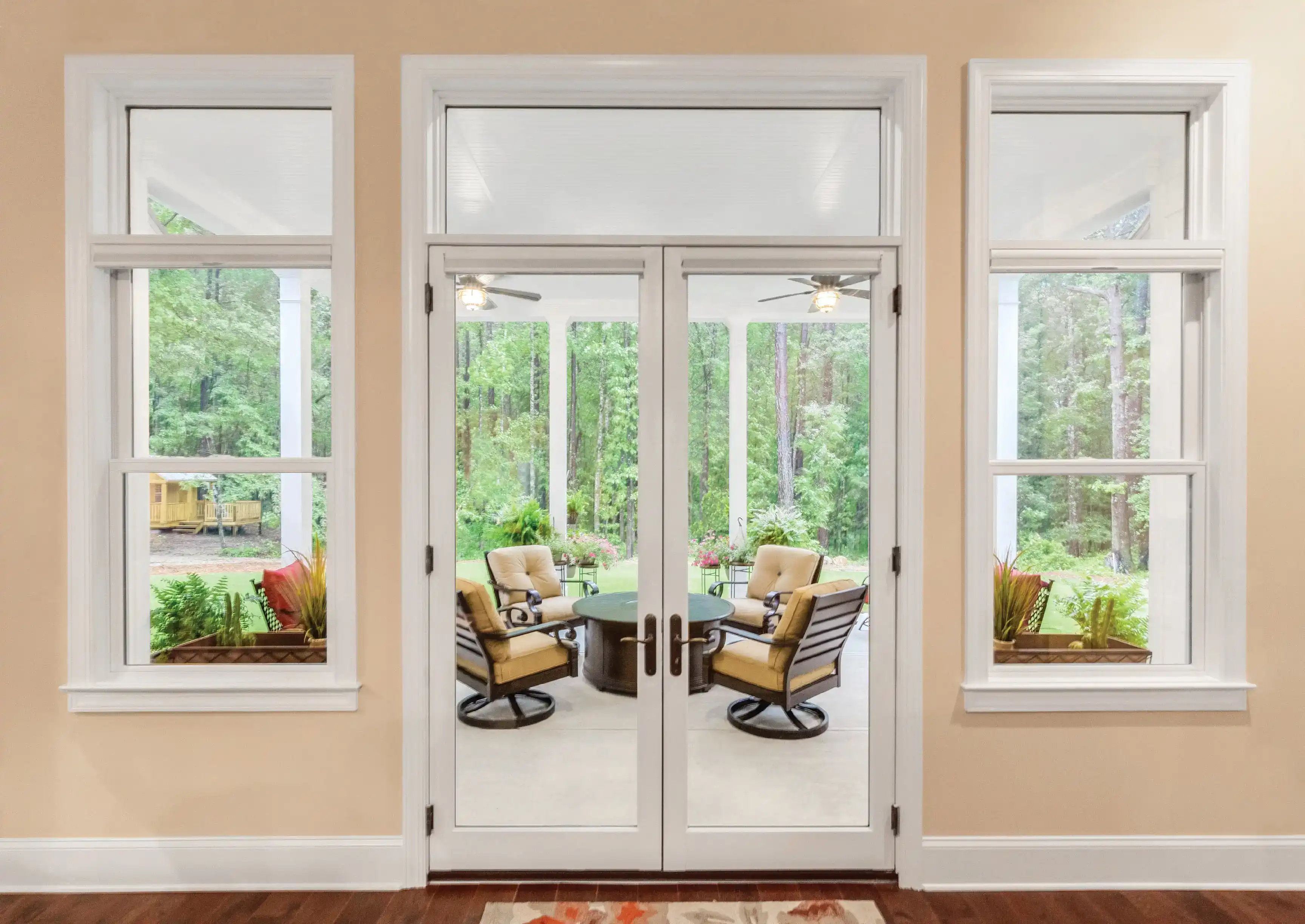
Marvin Replacement Windows + Doors Value
Searching for the best replacement windows and patio doors for your home can mean a lot of research. Check out our tips on how to find the best windows and doors for your home.
Best Replacement Windows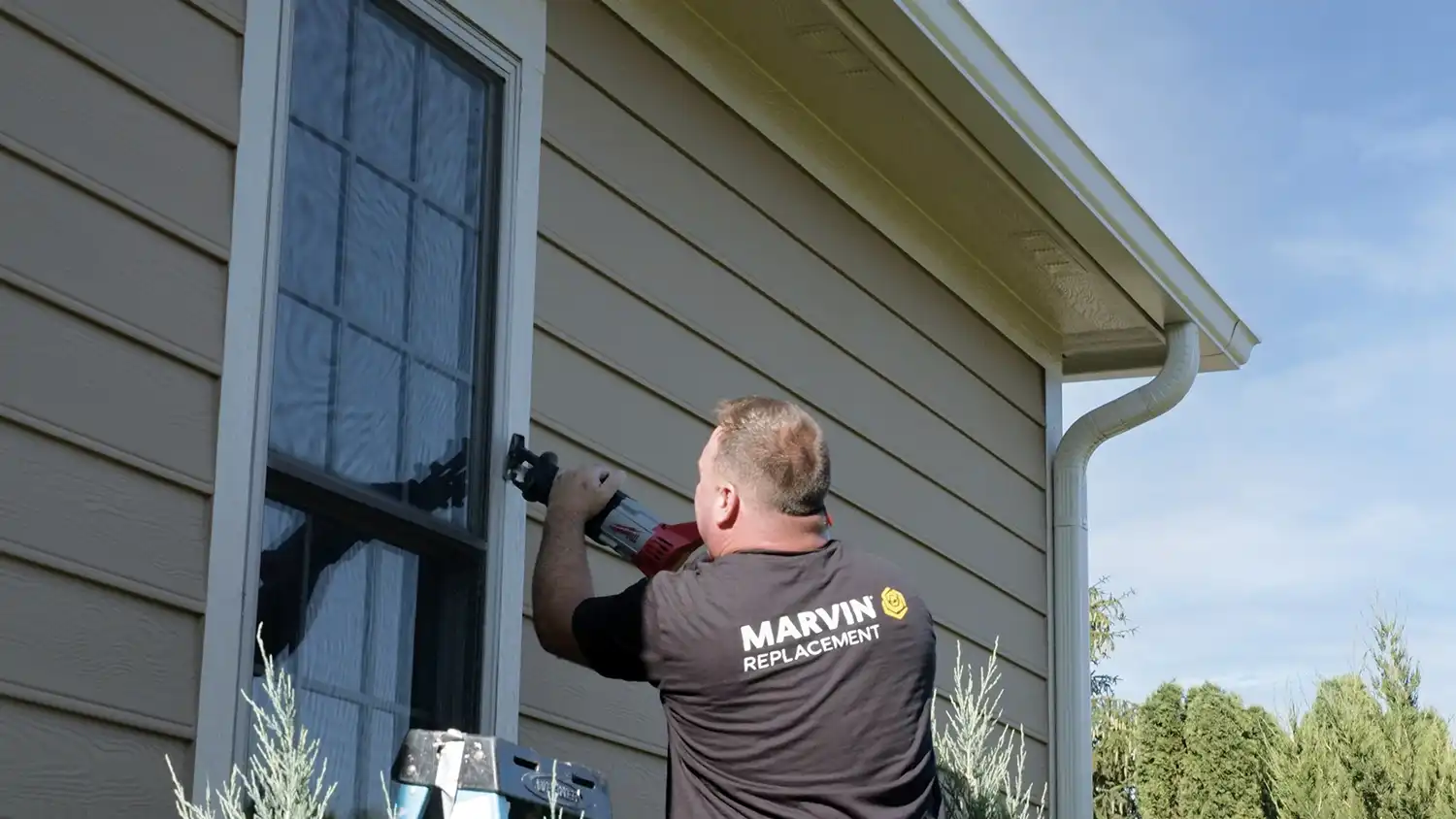
How Do I Get Replacement Windows + Patio Doors Installed?
What does replacement window and door installation look like? Find out how Marvin Replacement installs windows and doors.
Window Replacement Process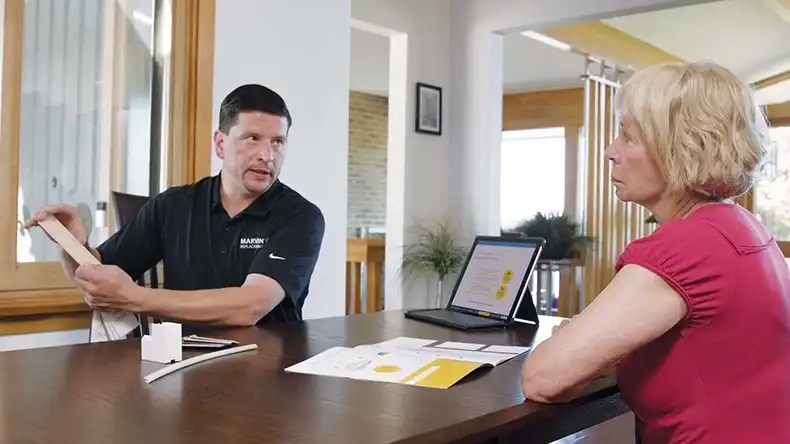
When to Replace Your Windows
Determining when it’s time to replace your windows can depend on the specific issue you’re facing. If you’re experiencing a broken window or damaged frame, you’ll likely want to take immediate action—but if you’re looking to refresh your home you might take a little more time to decide.
When to Replace Windows